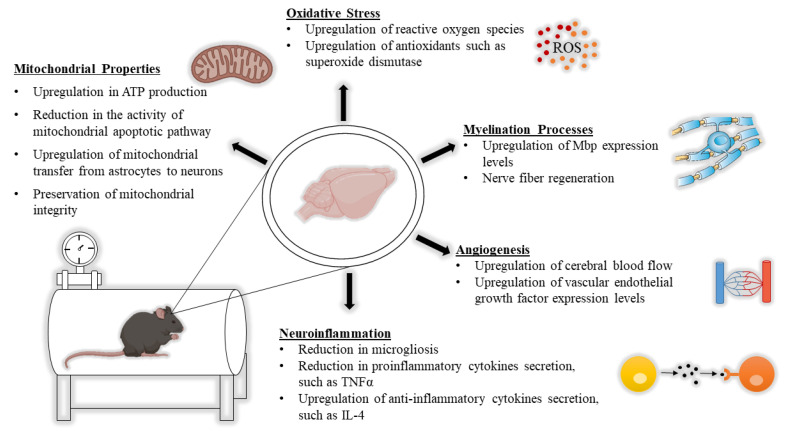In hyperbaric oxygen therapy (HBOT), people are placed in a hyperbaric chamber containing 100% oxygen and a pressure exceeding one absolute atmosphere. This treatment accelerates tissue recovery and improves its physiological aspects by providing more oxygen supply to damaged tissues.
Neurons and glial cells produce cellular energy and the continuous maintenance of brain metabolism depends on high oxygen consumption. Hypoxia in neurons may cause irreversible damage. Hypoxia in the developmental stage will affect brain development, leading to neurodevelopmental disorders (NDD). The options for treating hypoxia are limited. Hyperbaric oxygen therapy is a non-invasive treatment widely used in various human diseases and has been found to improve the therapeutic and molecular aspects of hypoxia-related diseases.
Traditionally, HBOT is used to accelerate the recovery of wound and infected tissue, assist in operations such as heart surgery, reduce carbon monoxide poisoning, and treat other diseases. Since hypoxia was identified as a key problem in several neurological diseases, HBOT was later studied in the context of neurobiological characteristics and showed the effect of improving biological and behavioral defects.
Changes in key molecules in the brain after hyperbaric oxygen therapy (HBOT)
(1) ASD
ASD is a group of developmental disorders characterized by suppressed social behavior and anxiety. One out of every 54 children is diagnosed with ASD, making it one of the most common NDDs. Interestingly, several molecular abnormalities that show ASD, such as mitochondrial dysfunction, white matter alterations, and hypoperfusion, are related to dysfunction that may be treated by HBOT. Therefore, HBOT is expected to mitigate some symptoms of ASD. People are placed in a soft sided hyperbaric chamber containing 100% oxygen to recover from neurological diseases.

In one study, some of 62 children with ASD were treated with HBOT and others were untreated. Based on the overall clinical impression assessment performed by the doctor and other improvements, the hard shell hyperbaric chamberoxygen treatment group showed significant improvements in language skills and social interaction.
(2) CP
CP is a type of NDD, which mainly occurs due to brain damage during brain development. The main cause of CP is decreased cerebral blood flow. This fact indicates that it is closely related to hypoxia, which therefore also indicates the therapeutic potential of HBOT.
A recent study investigated the combination of HBOT and intensive rehabilitation, including physical therapy and speech therapy, and compared it with a control group receiving only intensive rehabilitation. Compared with the control group, all three treatments significantly improved motor function, indicating that HBOT is beneficial to CP.
(3) TBI
TBI is one of the leading causes of death and disability among young people. When cerebral blood vessels are damaged, hypoxia is closely related to TBI. Therefore, HBOT has been extensively studied as a potential treatment for TBI.
HBOT can improve the cognitive function and quality of life of patients with TBI, increase cerebral blood flow, and improve motor skills and processing speed.
In short, there is a lot of evidence that HBOT can improve neurological diseases in terms of molecules and treatments. The main molecular changes that have been observed include improvements in the process of myelination and mitochondrial activity, enhancement of angiogenesis, and reduction of neuroinflammation. Treatment includes improving memory, cognitive and motor function, and quality of life. Future research can explore the deeper mechanisms that control the interaction between these molecular changes in the context of HBOT, and the most effective and safest choice for each disease and pathology when HBOT is applied to neurological diseases.
cr: https://www.ncbi.nlm.nih.gov/pmc/articles/PMC7564723/

Discount Price, ship by DHL, door to door service, 5-7days delivery time, local technical support

We supply soft and hard chambers from 1.3-2.0ATA to reach different customers' needs

Create custom uniquea hyperbaric chambers to reach your target market

We have more than 50 distributors around world, looking forward to having you on board.